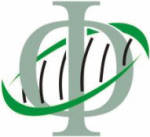Biophysics
|
10 july 2014 12:02:35 |
| Reduction of biofilm formation on titanium surface with ultraviolet-C pre-irradiation (Journal of Biomaterials Applications) |
|
Tweet Purpose
Ultraviolet-C irradiation on titanium implants has been recently introduced as photofunctionalization to enhance osseointegration, which possibly also provide anti-microbial function to titanium surface as with photocatalyst. The purpose of this study was to determine the effect of ultraviolet-C pre-irradiation to various topographical titanium surfaces on the attachment or biofilm formation of wound pathogens in comparison with that of ultraviolet-A pre-irradiation, with consideration for the physicochemical mechanism.
Materials and methods
The amount of wound pathogens such as Staphylococcus aureus or Streptococcus pyogenes on titanium disks with mirror-polished, turned, acid-etched, or shot-blasted surfaces with or without 500 J/cm2 ultraviolet-A or ultraviolet-C pre-irradiation for 8 h incubation in brain heart infusion broth was evaluated by fluorescence microscopic quantification with 5-cyano-2, 3-ditolyl-2 H-tetrazolium chloride staining for viable bacteria. The surface roughness, wettability, and atomic composition of the surface were evaluated before and after ultraviolet-A or ultraviolet-C irradiation.
Results
Regardless of topographies, the amount of bacterial attachment and accumulation was lower on ultraviolet-C pre-irradiated surfaces than on the non-irradiated surface through 8 h incubation. The reducing effect of bacterial accumulation on the roughened surfaces by ultraviolet-A pre-irradiation was inferior to that by ultraviolet-C. Despite no effect on surface topography, ultraviolet-C irradiation changed wettability to superhydrophilicity and reduced carbon contents on any titanium surface with a greater degree than those by ultraviolet-A irradiation.
Conclusion
Ultraviolet-C irradiation reduced the attachment and biofilm formation of wound pathogens on various topographical titanium surfaces, rivaling or surpassing UVA irradiation in degree. The mechanism might involve superhydrophilicity and carbon elimination on the surface.
|
| 90 viewsCategory: Biochemistry, Biophysics |
 Static versus vacuum cell seeding on high and low porosity ceramic scaffolds (Journal of Biomaterials Applications) Static versus vacuum cell seeding on high and low porosity ceramic scaffolds (Journal of Biomaterials Applications)In vitro apatite formation on porous anodic alumina induced by a phosphorylation treatment (Journal of Biomaterials Applications) 
|
| blog comments powered by Disqus |
MyJournals.org
The latest issues of all your favorite science journals on one page
The latest issues of all your favorite science journals on one page



